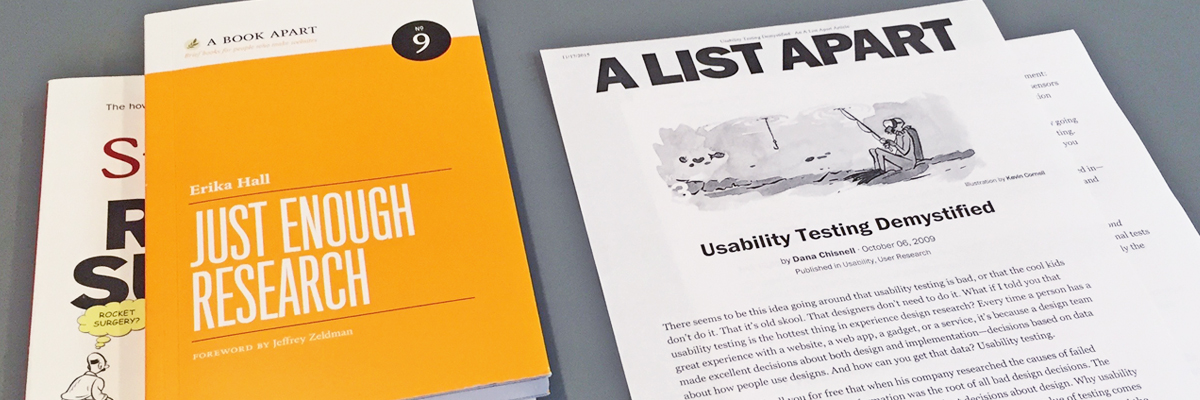
At Center Centre, our students get to choose their own learning adventures. We don’t require students to learn from one specific resource like a book or an online tutorial. Instead, they choose resources and experiences that meet their learning styles and learning needs.
As we’ve developed the User Research Practices course, we’ve found a lot of resources to help our students learn the basics of usability testing. Below are some of our favorites. If you’d like to learn more about usability testing, use these resources to develop your own learning adventure.
Books
-
Steve Krug’s Rocket Surgery Made Easy is a fast and easy read. It demystifies usability testing. It explains how to run usability tests at your organization, even if you have a small budget or are short on time. After you read this book, you’ll know how to get started with usability testing.
-
For a deeper dive into usability testing, read the Handbook of Usability Testing by Jeffrey Rubin and Dana Chisnell. This book walks you through each step of the usability testing process, from planning a test to analyzing the results, then sharing the results with your team. Because this book dives deeply into the process of usability testing, I suggest reading a few of the articles below, watching one of the videos below, or reading Rocket Surgery Made Easy before you read this book.
- Just Enough Research by Erika Hall explains why we need to conduct user research (usability testing is a form of user research). Read Erika’s book if you want an introduction to user research that explores usability testing, user interviews, field visits, and surveys.
Videos
-
Erika Hall’s Just Enough Research video presentation explains why we conduct user research. Her presentation covers many of the concepts in her book, listed above. Use this video as an alternative to reading the book.
-
Steve Krug’s Rocket Surgery Made Easy video demo supplements Steve’s book by the same name, listed above. In the video, he walks you through a real usability test. He even suggests what to take notes on before the video begins. At the end of the video, he prompts you to evaluate the findings in your notes.
- The All You Can Learn (AYCL) seminar, Effectively Moderating Usability Tests, explains things like how to interact with participants, how to make participants feel comfortable, and how to get accurate data from participants. To watch this seminar, you’ll need a monthly subscription to the AYCL library, or you can purchase this specific seminar.
Articles
-
“Usability Testing Demystified” by Dana Chisnell walks you through the process of conducting a usability study. Dana also explains how to involve your team in the usability study. If you’re brand new to usability testing, start with this article.
-
“Talking with Participants During a Usability Test“ by Nielsen Norman Group shows you how to ask effective questions and elicit important findings from participants in a usability test.
-
“Six Steps to Ensure a Successful Usability Test” by Ginny Redish provides six essential guidelines for running an effective usability test, such as selecting user tasks that uncover the biggest problems.
- “Testing Content” by Angela Colter explains how to usability test your content. It’s usually not enough to make sure that our users can find the content they need. Usability tests also need tell us if users understand the content in our designs.
Apply to be a student
Do you want to learn how to conduct usability tests or how to use other methods of user research? Become a student. View our full program or apply today.


